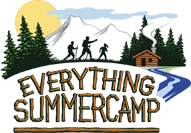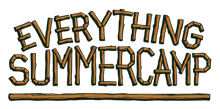Hey, Busy Boys and Girls!
As the summer heat begins to retreat, our minds start to shift from the hustle bustle of summer and we slowly focus more on the relaxing side of life. Summer certainly is a demanding season. Take today for a great break from the constant hecticness of always being on the go, always being engaged, and always  occupying your mind. Today’s Relaxation Day. Take a note and do some non-doing!
occupying your mind. Today’s Relaxation Day. Take a note and do some non-doing!
Wakeful relaxation is just as important as relaxing in your sleep! Some people call it meditation. Others say non-doing. It sounds counterproductive—sitting there doing nothing—but it actually increases your efficiency through everyday life with shocking effectiveness.
Check out the Benefits of Focusing on Doing Nothing:
Go With the FlowDon’t think of it so much as ‘doing nothing’ but more like building your ability to go with the flow. By letting go of built-up tension from daily stresses, we strengthen our connectedness to living in the moment. We pay better attention to what we are doing, and our actions come with less effort.
Flexing Your FocusWhether you were drawing a picture or making contact between the ball and your bat, have you ever felt so focused on something that you knew you would succeed? When you’re that tapped into the moment, time seems to slow down and we feel melded with whatever we are doing.
Lose the ‘TudeA bad attitude affects everyone it encounters, but for your own sake if for no one else’s, ditching a crummy mood feels amazing! Often times, we choose to simply stay in the mode we’ve been in—a sort of emotional inertia—but taking the time to focus on nothing but deep breathing is more often than not just what you need to switch gears for a more positive demeanor.
Give yourself a break today. Take a relaxing bath, sit in a comfy chair, go lie in the grass—just try not to let your mind wander too much. Focus on enjoying the moment without any demands or problems to distract you. It’s not always so easy, but it’s incredibly refreshing when you make it happen. So, go ahead! Do yourself a favor, and find some time to really relax today! And, as always, thanks for reading!
- John


 created by the native Inuit people of the arctic as far back as at least 4000 years! The first kayaks were made from wooden frames or whalebones covered in the skin of seals and other available animals. Early kayaks varied greatly in design and were never really built the same as another.
created by the native Inuit people of the arctic as far back as at least 4000 years! The first kayaks were made from wooden frames or whalebones covered in the skin of seals and other available animals. Early kayaks varied greatly in design and were never really built the same as another.
 longest history, the name comes from the Althaea Officinalis plant which is a member of the ‘mallow’ family and likes to grow in marshes. Ya get it? This plant is no longer found in marshmallows, but the sticky contents of the plant’s root used to be the key ingredient. In Ancient Egypt, they’d use it as a cure for sore throats. They’d cover it in honey and nuts for a sweet treat as well! In the 1800s, French candy makers combined the plant root contents with sugar and beaten egg whites and created a sweet paste—the forerunner to the now-artificial, cylindrical, and jet-puffed treat we find today.
longest history, the name comes from the Althaea Officinalis plant which is a member of the ‘mallow’ family and likes to grow in marshes. Ya get it? This plant is no longer found in marshmallows, but the sticky contents of the plant’s root used to be the key ingredient. In Ancient Egypt, they’d use it as a cure for sore throats. They’d cover it in honey and nuts for a sweet treat as well! In the 1800s, French candy makers combined the plant root contents with sugar and beaten egg whites and created a sweet paste—the forerunner to the now-artificial, cylindrical, and jet-puffed treat we find today.  you can find these symbols of hope in all different shapes and sizes. Here are several unique lighthouses.
you can find these symbols of hope in all different shapes and sizes. Here are several unique lighthouses.

 Mary Edgar chose this property because she found the glen at the base of a hill close to the lake to be perfect for a number of camp programs such as campfires, storytelling, outdoor plays, and other traditional games. The camp was founded in 1922—initially 225 acres but grew to 430 by just the second year!
Mary Edgar chose this property because she found the glen at the base of a hill close to the lake to be perfect for a number of camp programs such as campfires, storytelling, outdoor plays, and other traditional games. The camp was founded in 1922—initially 225 acres but grew to 430 by just the second year!